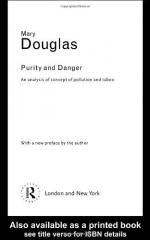|
This section contains 544 words (approx. 2 pages at 400 words per page) |

|
Chapter 4 Summary and Analysis
Rituals as part of primitive culture embrace harmony, order, and meaning. Such features are part of both positive and negative rites. Rites and rituals are part of essential practices to prevent diseases for the Dinka, who attempt to cure malaria with an annual ceremony. Early research contributed to the view that primitive cultures are separated from modern, leading to the emergence of comparative religion. A shortsighted approach to magic and rituals as part of primitive means to deal with things that are little understood has been responsible for the development of comparative religion. Rituals have been regarded as naïve, as they expect external effects. Malinowski drew different conclusions when researching primitive cultures and formed an opinion that rituals derive from emotions. His insights on ordinary speech also influenced linguistics. Douglas claims that rituals have been wrongly assumed to have connection...
(read more from the Chapter 4 Summary)
|
This section contains 544 words (approx. 2 pages at 400 words per page) |

|




